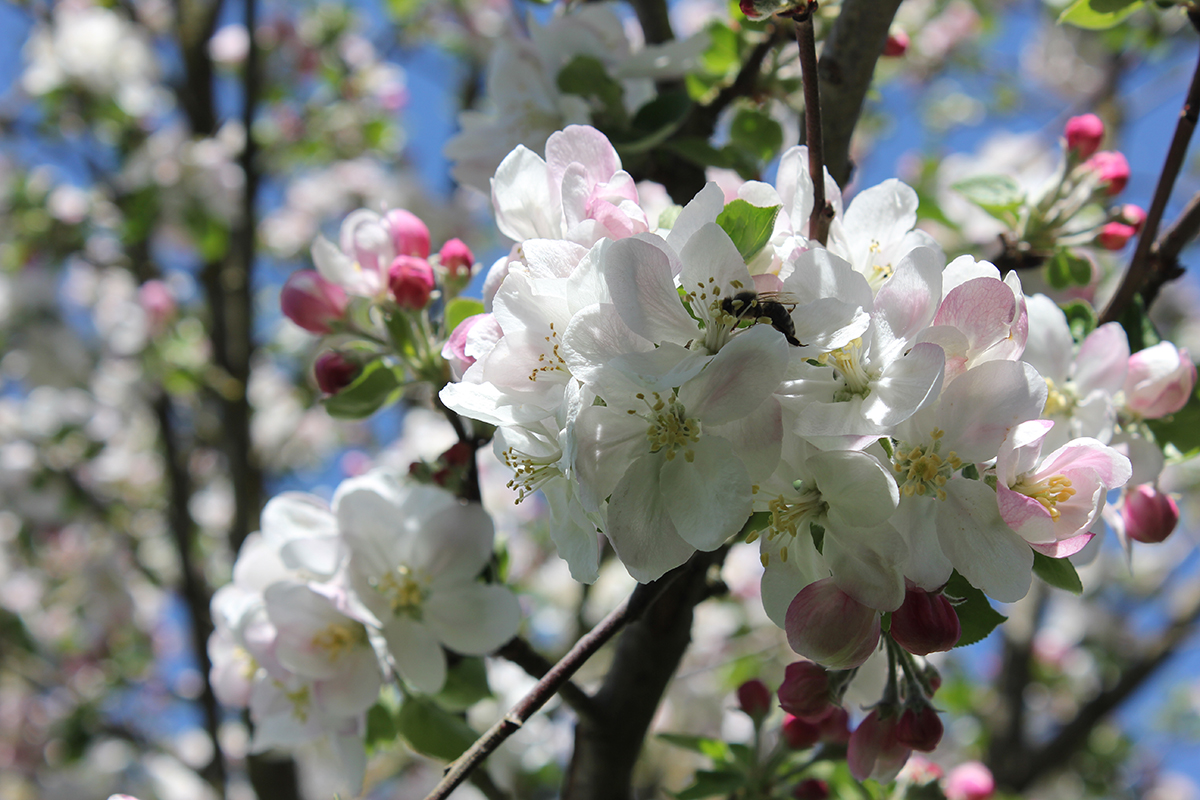Basque ethnography at a glance

Fruit tree in full bloom. Luis Manuel Peña. Labayru Fundazioa Photographic Archive.
Just as a house was not a home unless it contained a hearth, blood was regarded as the very essence of life and health for people and farm animals alike. Indeed, there is an old saying that ‘a house without fire is like a body without blood’, its documented Basque equivalent being su bako etxea, gorputz odolbagea.
Blood also refers to emotions and temperament, especially when passionate. Thus, for instance, we say that someone who annoys us ‘makes our blood boil’, odolak irakiten deusku, or that someone ‘seems to have no blood in his veins’, odolbakoa da, to suggest that nothing upsets or moves him, or that he lacks passion and verve. There are plenty of similar expressions that we use, almost without realizing it, in everyday language.
Equally interesting are the parallels traditionally drawn between blood and the sap of trees and plants in general. It is popular belief that seasonal changes and moon phases have an effect on blood just as they affect the sap, and that spring and autumn are the seasons when, coinciding with the growth and fall of leaves, major changes take place in the blood. And they appear to occur in spring to a much greater extent than in autumn. Not for nothing do we say that a feeling of restlessness or exuberance, known as ‘spring fever’, starts to spread when the sap rises.
In folk medicine blood was understood as prime indicator of health, so that when its balance is altered, disease is more likely to strike.
Blood was known to ‘thicken’ at times, the equivalent to ‘having high blood pressure’ in medical terms. Thick blood was considered a truly serious condition, and remedies to lighten it were widespread.
Similarly to what happens to sap, the flow of blood was believed to increase during spring reactivation. As a consequence of possible alterations of the blood, there is a chance of it getting impure, either because it becomes too thick, or due to an excess of blood in the veins.
Distress and anger are, along with spring, the main causes of the appearance of impurities of the blood, according to multiple informants. Hence the reason tension and disdain between people are said to create ‘bad blood’ odol txarra, and the logic behind saying that ‘one’s blood is up’, odolak burura egin, when in an angry or aggressive mood.
Be that as it may, spring is a good time to cleanse and lighten the blood. Various plants and foods with recognized medicinal properties served the purpose, nettle tea being the most common traditional remedy.
Other than nettle, many other herbs have also been used, among them buckthorn and horsetail. Watercress, borage and celery are likewise recommended.
Having blood thicker than usual was taken as a threat both to human and livestock health. So nettles were added to the feed of pigs being fattened for slaughter, and thus prevent a determination of blood to the brain, odolarenak emon.
Bloodletting, claimed to have been the most common practice for treating blood-related disorders, deserves particular attention and shall be dealt with in a future post.
Jaione Bilbao – Ethnography Department – Labayru Fundazioa
(Adapted from Popular Medicine, part of the Ethnographic Atlas of the Basque Country collection, including data specific to Livestock Farming and Shepherding)


[…] A previous post dedicated to springtime and the humoral alterations which it brings about might likewise be of interest. […]